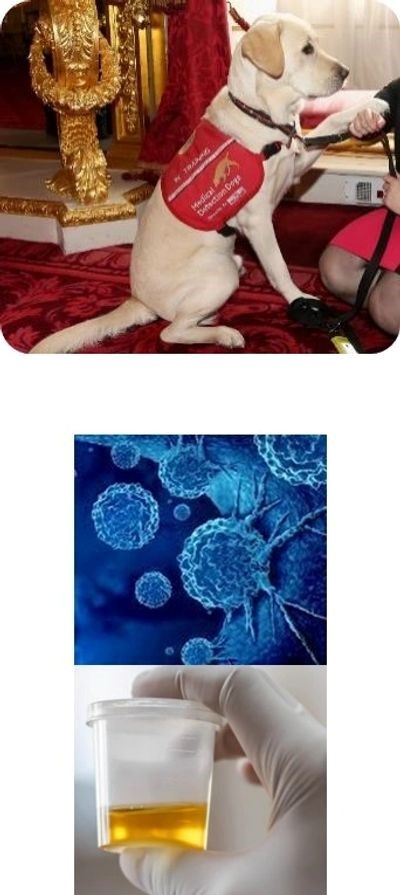 |
HOME | ABOUT US | HOW IT WORKS | PRODUCT | PUBLICATIONS | THE TEAM | CONTACT US |  |

DETECTION OF VOLATILE ORGANIC COMPOUNDS FOR CANCER SCREENING AND DIAGNOSIS |
| About Us | ||||||
 |
Introduction
Cancer cells, tumours, and healthy cells affected by cancer, all produce and release volatile organic compounds (VOCs), which are released into urine, exhaled breath, and sweat, thus generating specific odour signatures for the diseases. Research suggests that dogs can smell many types of human cancers. SensAm has developed diagnostic systems (electronic noses) that can reliably detect odour signatures from cancer, matching dogs' abilities. Volatile Organic Compounds
The intrinsic switch within a cancer cell alters its metabolic profile, and following this cellular damage, the VOCs are released from the tissue and find their way into circulation. The healthy and malignant tissues have distinctive bio-signatures (smell prints). Hence, the detection and analysis of VOCs can aid differentiation between them. When cancer metabolites appear in the systemic circulation, they reach the kidneys, and, following filtration, the cancer metabolic by-products find their way into the urine. SensAm Ltd
The system developers, Professor Krishna Persaud and Dr. Frank Kvasnik have extensive experience and publications in the biological aspects of sensor arrays, electronics, signal processing, and pattern recognition. They used their considerable know-how to design SensAmís compact analytical system, which offers unparalleled performance in real-life applications. Over the past few years, the system has been successfully used in several clinical studies in the UK. The products are in development and the company is interested in investment and industrial collaborations that would aid the speedy completion of the development and the market launch. |
 |
||||||